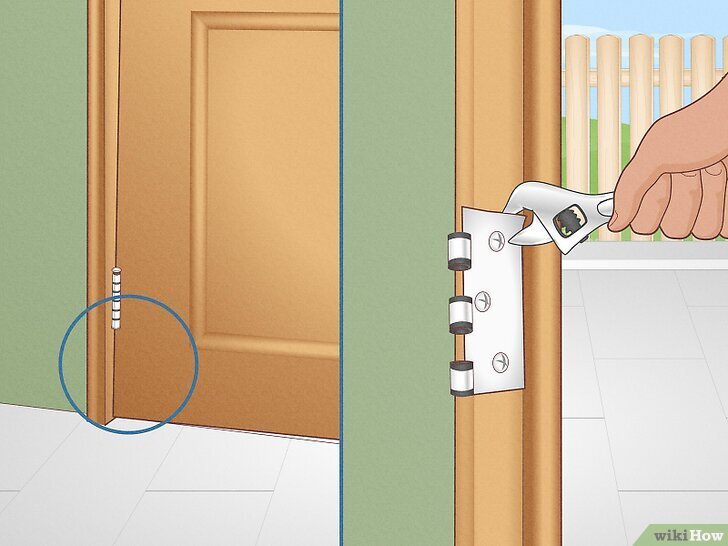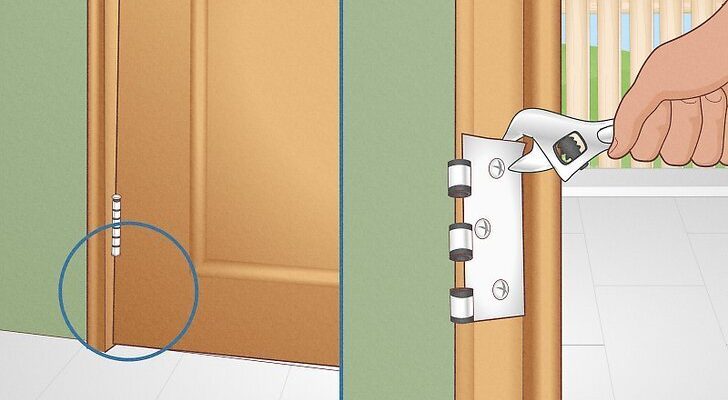
Understanding how door latches work is key to troubleshooting this issue. Typically, a door latch consists of a few main parts: the latch bolt, the strike plate, and sometimes a spring mechanism. When you turn the knob or handle, the latch bolt should retract and then slide back into place when you close the door. If it doesn’t, you might find yourself facing a range of issues—from something as simple as dirt and debris to serious alignment problems. Let’s dive into some common troubleshooting steps to help you get that door latch working smoothly again.
Identifying the Problem: What’s Causing the Latch Issue?
Before you dive into fixing your door latch, it’s important to identify what might be causing the problem. Here’s where you can start:
1. Check for Obstructions: Often, the simplest explanation is the right one. Dirt, dust, or debris can sometimes build up around the latch or in the strike plate. Take a close look at both areas. If you notice any obstructions, a quick clean with a cloth or a soft brush can help clear things up.
2. Misalignment: Another common culprit is misalignment. Over time, hinges can sag or door frames can warp due to changes in humidity or temperature. If your door is not closing properly, the latch may not meet the strike plate correctly, preventing full engagement.
3. Worn Parts: Latches aren’t immune to wear and tear. If your door latch is old, the internal mechanism might be worn out. This could prevent the latch bolt from moving fully, leading to engagement problems.
After pinpointing the issue, you can move on to specific troubleshooting steps to fix it.
Step-by-Step Guide to Fixing a Door Latch
Now that you’ve identified the problem, let’s walk through a troubleshooting process to address it. Here’s a clear breakdown of what you need to do:
1. Clean the Latch and Strike Plate: Start by cleaning the latch itself. Use a cloth or soft brush to remove any dirt or debris. Make sure to get into hard-to-reach areas as well, since even a tiny speck can make a big difference. After cleaning, try engaging the latch again.
2. Check for Alignment: Open the door and inspect the latch and strike plate. Ideally, the latch should fit snugly into the strike plate when the door is closed. If it’s off, you might need to tighten or adjust the hinges. Loosen the screws slightly, reposition the door, and tighten them again.
3. Lubricate Moving Parts: Sometimes, it’s just about giving things a little help. Apply a lubricant like WD-40 or a silicone spray to the latch and bolt. This can help smooth out any sticking points. Just be cautious not to use too much, as it can attract dirt.
If these steps don’t solve the problem, it might be time to consider deeper issues or replacements.
When to Replace the Door Latch
There are moments when fixing the latch isn’t enough, and you may need a replacement. Here are a few signs that it’s time to let go and invest in a new latch:
1. Frequent Malfunctions: If you find yourself repeatedly fixing the latch, it’s probably time for an upgrade. Continuous issues can be exhausting and can affect your home’s security.
2. Visible Damage: Look for cracks, bending, or extreme wear on the latch. If the latch bolt is fraying or you notice other physical damages, replacing the latch is likely the most effective solution.
3. Compatibility Issues: If you’re planning to upgrade your door hardware or install a smart lock system, you might need a new latch that’s compatible with those devices.
Replacing a latch can be a straightforward DIY task if you’ve got the right tools. You can typically find replacements at local hardware stores.
Alternative Solutions: Upgrading Your Door Hardware
If you’re thinking about upgrading your latch, you might want to consider an entirely new door hardware set. Here’s why and what to look for:
1. Smart Latch Options: Nowadays, smart locks and latches are becoming increasingly popular. These devices offer convenience and added security through features like keyless entry. If you’re thinking of upgrading, you might enjoy the benefits of a smart latch system, not to mention cutting down on those pesky key fumbles.
2. Universal Latch Kits: If you’re looking for an alternative to your current latch, there are universal latch kits that fit most standard doors. These kits often come with easy installation instructions and all the necessary parts to ensure your door operates smoothly.
3. Professional Installation: If you’re uncomfortable tackling the installation yourself, consider hiring a professional. This can save you time and ensure the latch is installed correctly.
Preventive Measures: Keeping Your Latch in Top Shape
Once you’ve fixed or replaced your door latch, it’s essential to think about maintaining it to prevent future issues. Here are some simple steps to keep it in good condition:
1. Regular Cleaning: Make it a habit to clean the latch and surrounding areas every few months. Dust and dirt can accumulate faster than you think, and a quick wipe down can prevent bigger headaches later on.
2. Check for Misalignment: Every few months, take a moment to check the alignment of your door and latch. If you notice any changes, address them before they become more significant problems.
3. Lubrication: Don’t forget about lubrication! A light spray on the latch mechanism every few months can keep it functioning smoothly. Just be careful not to overdo it.
Taking these preventive steps can extend the life of your door latch, saving you from future troubleshooting.
Dealing with a door latch that won’t engage fully can be frustrating, but with the right approach, you can troubleshoot and resolve the issue. Start by identifying the problem, follow the step-by-step guide to fix it, and don’t hesitate to replace the latch if necessary. Upgrading your door hardware can also enhance your home security and convenience.
By maintaining your latch with regular cleaning and lubrication, you can keep that door functioning smoothly for years to come. Remember, door latches are small but vital components of your home—keeping them in top shape ensures that you always feel secure inside.
